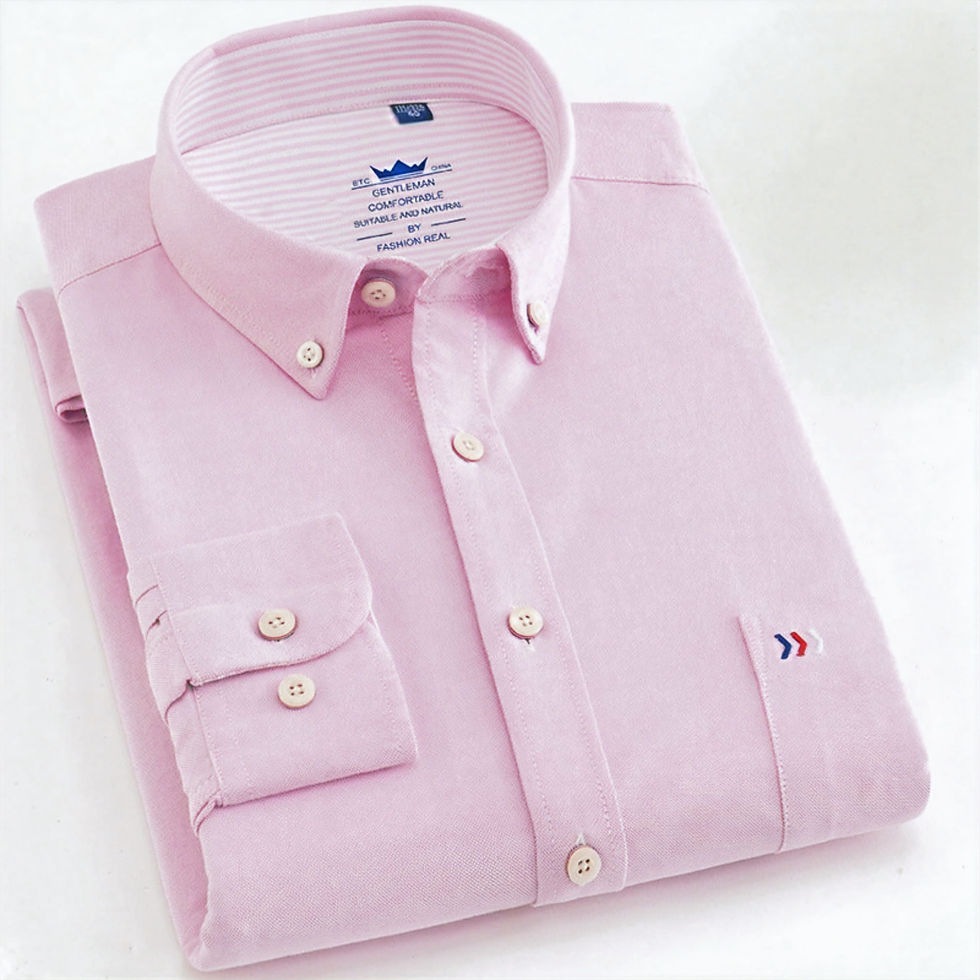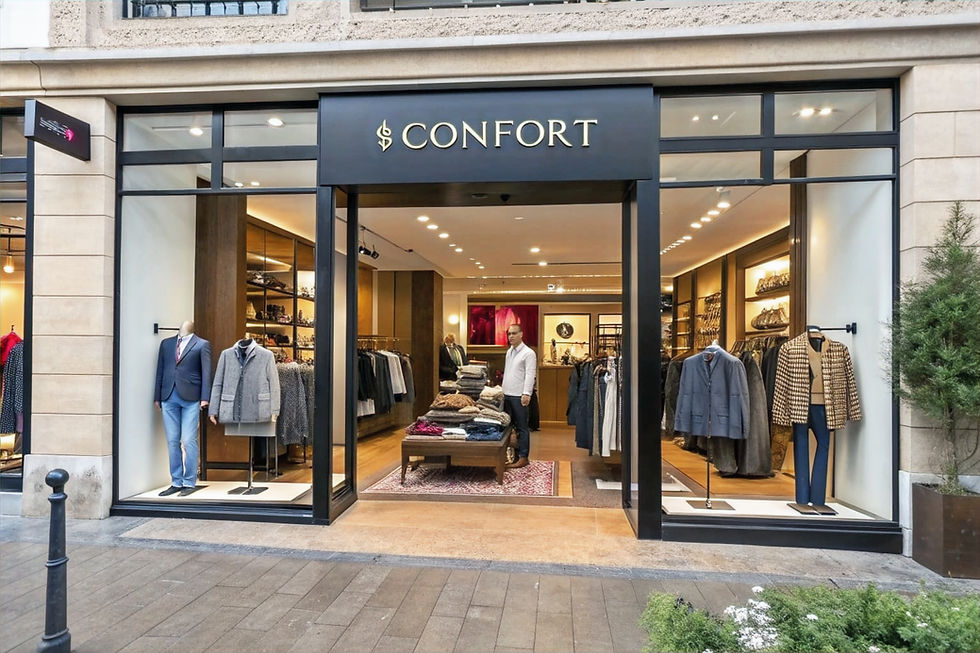Sustainable Fashion Trends: How to Make Eco-Friendly Wardrobe Choices
- dsadigou
- May 22, 2024
- 8 min read
Updated: Aug 11
The Best Sustainable Fashion Trends and Tips - SCONFORT
Explore the latest sustainable fashion trends and commit to a greener future. Eco-responsible styles and ecological innovations to discover.
Sustainable Fashion Trends: How to Make Eco-Friendly Wardrobe Choices
Introduction
The fashion industry is one of the most polluting industries in the world. It is responsible for a significant amount of waste, greenhouse gas emissions and water pollution. Fortunately, more and more people are becoming aware of the environmental impact of their clothing choices and are turning to more sustainable options.
In this blog post, we'll explore sustainable fashion trends and give you tips on how to make ecological wardrobe choices. We'll also feature sustainable fashion brands and tips for buying second-hand clothing.
What is sustainable fashion?
Sustainable fashion is an approach to fashion that aims to minimize the environmental and social impact of clothing production and consumption. This includes using sustainable materials, reducing waste, improving working conditions and promoting circularity.
Why is sustainable fashion important?
Sustainable fashion is important for several reasons. First of all, it helps reduce the environmental impact of the fashion industry. By using sustainable materials and reducing waste, sustainable fashion can help conserve natural resources and reduce pollution.
Second, sustainable fashion can improve working conditions in the fashion industry. By ensuring workers are treated fairly and paid a living wage, sustainable fashion can help improve the lives of the people who make our clothes.
Third, sustainable fashion can promote circularity. By encouraging people to buy second-hand clothes, repair their clothes and recycle them, sustainable fashion can help reduce the amount of waste that ends up in landfills.
Sustainable fashion trends
There are several sustainable fashion trends that are gaining popularity. Here are some of the most important:
Sustainable materials: Sustainable fashion brands are increasingly using sustainable materials such as organic cotton, hemp, linen, Tencel and recycled polyester. These materials are more environmentally friendly than traditional materials such as conventional cotton and polyester.
Ethical production: Sustainable fashion brands are committed to producing their clothing ethically. This means they make sure their workers are treated fairly and paid a decent wage.
Circularity: Sustainable fashion brands encourage people to buy second-hand clothes, repair their clothes and recycle them. This helps reduce the amount of waste that ends up in landfills.
Transparency: Sustainable fashion brands are increasingly transparent about their production practices. This allows consumers to make informed decisions about the clothing they purchase.
How to make ecological wardrobe choices
There are several things you can do to make ecological wardrobe choices. Here are a few tips :
Buy less clothing: The best way to reduce the environmental impact of your clothing is to buy less. Try to only buy clothes that you really need and will wear often.
Buy second-hand clothing: Buying second-hand clothing is a great way to reduce your environmental impact. You can find second-hand clothing at thrift stores, vintage stores, and online shopping websites.
Choose clothes made from sustainable materials: When buying new clothes, choose clothes made from sustainable materials such as organic cotton, hemp, linen, Tencel and recycled polyester.
Support sustainable fashion brands: There are many sustainable fashion brands that are committed to producing clothing in an ethical and ecological way. Support these brands by purchasing their products.
Take care of your clothes: By taking care of your clothes, you can make them last longer. Wash your clothes in cold water, air dry them and store them properly.
Repair your clothes: If your clothes are damaged, try repairing them instead of throwing them away. You can learn to repair your clothes yourself or have them repaired by a professional.
Recycle your clothes: When your clothes are at the end of their life, recycle them. You can find clothing recycling programs in many cities and towns.
Rent clothes for special occasions: If you need an outfit for a special occasion, consider renting clothes instead of buying them. There are many clothing rental services available that offer a wide selection of stylish and affordable outfits.
Swap clothes with friends and family: Swap clothes with friends and family is a great way to refresh your wardrobe without spending money. Have a clothes swap party with your friends and exchange clothes you no longer wear.
Learn to sew and knit: Learning to sew and knit can help you create your own clothes from scratch. It's a great way to reduce your environmental impact and create unique clothing you'll love.
Volunteer at a clothing charity: Volunteering at a clothing charity is a great way to give your old clothes a second life. You can donate your old clothes to a charity or help them sort and sell second-hand clothes.
Be a conscious consumer: Before purchasing an item of clothing, learn about the brand and its production practices. Make sure the brand is committed to producing clothing ethically and environmentally.
Support sustainable fashion initiatives: There are many sustainable fashion initiatives that aim to reduce the environmental impact of the fashion industry. Support these initiatives by making a donation or participating in events.
The benefits of sustainable fashion
The environmental benefits of sustainable practices are immense. Reducing pollution, minimizing deforestation, and reducing the use of natural resources help protect biodiversity and combat climate change. Adopting green technologies and renewable energy sources reduces greenhouse gas emissions, promoting a healthier future for our planet.
The benefits for producing communities engaged in sustainable practices are significant. Adopting ethical production methods ensures fair and safe working conditions, thereby improving the quality of life of workers. Additionally, these practices promote local economic development by offering fair wages and reinvesting in the community.
They also encourage the preservation of traditional know-how and the transmission of skills, strengthening the cultural identity and resilience of communities in the face of global challenges.
For the consumer, adopting sustainable practices offers multiple benefits. Not only does this contribute to protecting the environment and supporting producing communities, but it also guarantees access to better quality, healthier and often more sustainable products.
This can result in long-term savings by reducing the need to frequently replace goods. In addition, it offers the opportunity to make more ethical choices aligned with one's personal values, thus increasing personal satisfaction.
How to incorporate sustainable fashion into your wardrobe
Assess and minimize your fashion impact
Calculating the carbon footprint of your wardrobe is a step towards more responsible fashion. By evaluating materials, clothing provenance and production practices, you can identify the most impactful pieces. Adopting habits such as favoring quality, choosing sustainable brands and opting for second hand, significantly reduces your
To reduce the environmental impact of your wardrobe, focus on purchasing clothing made from sustainable materials and ethically produced products. Opt for quality over quantity, favoring pieces that last longer. Consider buying second-hand or recycling your clothes. Finally, maintain your clothes with care to prolong their life, using ecological washing methods.
Choosing timeless pieces
The importance of prioritizing quality over quantity in our wardrobe lies in its significant impact on the environment and our well-being. Investing in better quality clothing means fewer impulse purchases and reduced textile waste. This encourages conscious and sustainable consumption, where each piece is chosen for its longevity, timeless style and lower ecological impact.
Versatile pieces are essential for a durable and functional wardrobe. For example, a classic trench coat can be worn in all seasons, adapting to various outfits. Good quality jeans go just as well with sneakers for a casual look as with heels for an evening. Cashmere sweaters, both warm and light, offer comfort and elegance for any occasion.
Supporting sustainable brands
To find and choose sustainable brands, start by researching their commitment to ethical and ecological practices. Check their certifications, like Fair Trade or GOTS, indicating environmentally and worker-friendly production. Read their sustainability policy and consumer reviews carefully. Favor companies that are transparent about their supply chain and those that invest in green initiatives.
Challenges and solutions for more sustainable fashion
Overcoming price barriers
At first glance, sustainable fashion seems more expensive than conventional fashion. However, when comparing the long-term cost, sustainability proves to be economically advantageous. Durable clothing, made with quality materials and ethical practices, stands up better over time, reducing the need for frequent replacements. So, although the initial investment is higher, the cost per use decreases, providing better profitability over time.
Making sustainable fashion accessible can seem tricky, but a few simple tips can help. Explore thrift stores and second-hand platforms to find unique pieces at a lower cost. Participate in clothing swaps with friends or community events. Be on the lookout for sales at sustainable brands to acquire quality items at reduced prices. Finally, learn how to repair and personalize your clothes to extend their life.
Awareness and education
Raising awareness plays a crucial role in promoting sustainable fashion. By educating consumers about the environmental and social impacts of their clothing choices, we encourage more thoughtful purchasing practices. Information campaigns, workshops, and social media can spread knowledge about sustainable alternatives, inspiring a change towards responsible consumption habits and a more ethical fashion industry.
To further educate yourself on various topics, take advantage of online resources such as free courses on education platforms, specialized blogs, and podcasts. Local libraries offer free access to books and magazines. Conferences and webinars are also great opportunities to learn from experts. Finally, social networks can be a wealth of information, provided you follow the right pages and groups.
Sustainable fashion brands
There are many sustainable fashion brands that produce stylish and eco-friendly clothing. Here are some of our favorites:
Patagonia: Patagonia is an outdoor clothing brand committed to producing clothing ethically and environmentally.
Everlane: Everlane is a clothing brand that offers high-quality, basic clothing at affordable prices.
Reformation: Reformation is a women's clothing brand that uses sustainable materials and ethical production practices.
Stella McCartney: Stella McCartney is a luxury brand that uses sustainable materials and ethical production practices.
Veja: Veja is a footwear brand that uses sustainable materials and ethical production practices.
Out land Denim: Out land Denim is a denim brand that employs female survivors of human trafficking.
Fair Trade USA: Fair Trade USA is an organization that certifies products that are produced according to ethical and sustainable standards.
Global Organic Textile Standard (GOTS): GOTS is a global standard that certifies organic textiles.
Blue sign: Blue sign is a system that helps textile companies reduce their environmental impact.
Tips for buying second-hand clothing
Buying second-hand clothing is a great way to reduce your environmental impact and save money. Here are some tips for buying second-hand clothes:
Do your research: Before you start shopping for second-hand clothes, do your research and find reputable stores and websites.
Take your time: Buying second-hand clothes takes time. Don't rush and take the time to find the clothes you want.
Check the quality: Before buying a second-hand item, check its quality. Make sure it is not damaged and is in good condition.
Don't be afraid to negotiate: You can often negotiate the price of used clothing. Don't be afraid to make an offer.
Have fun ! Buying second-hand clothes can be a fun experience. Enjoy the process and find unique clothes you'll love.
Conclusion
Sustainable fashion is an important movement that aims to reduce the environmental and social impact of the fashion industry. By making ecological wardrobe choices, you can help protect the planet and improve the lives of the people who make our clothes.
Remember, you don't need to completely change your wardrobe overnight. Start by making small changes, like buying fewer clothes, buying second-hand clothes, and supporting sustainable fashion brands. Every little gesture counts.
Additional resources for sustainable fashion
The Sustainable Fashion Forum: https://sustainablefashionforum.com/
The Ellen MacArthur Foundation: https://ellenmacarthurfoundation.org/topics/circular-economy/what-is-the-circular-economy



Sustainable Fashion Trends FAQ
1. What is sustainable fashion?
Sustainable fashion focuses on creating ethical and environmentally friendly clothing, minimizing the ecological impact throughout the product lifecycle.
2. Why is it important to adopt sustainable fashion practices?
Adopting sustainable fashion helps reduce waste, protect the environment and promote fair working conditions for workers in the textile industry.
3. What are the main trends in sustainable fashion?
Trends include the use of recycled materials, local production, circular fashion (upcycling) and transparency in supply chains.
4. How can I incorporate sustainable fashion into my wardrobe?
Start by buying second-hand clothes, favoring ethical brands and investing in quality, timeless pieces that will last over time.
5. Is sustainable fashion always more expensive?
Not necessarily. While some ethical brands may have higher price tags, there are also plenty of affordable options, especially in the second-hand market.
6. What materials are considered sustainable?
Sustainable materials include organic cotton, linen, hemp, recycled polyester, and other ecologic fibers that require fewer resources and energy to produce.






Comments